Swann PRO-780 Handleiding
Swann
Bewakingscamera
PRO-780
Bekijk gratis de handleiding van Swann PRO-780 (8 pagina’s), behorend tot de categorie Bewakingscamera. Deze gids werd als nuttig beoordeeld door 50 mensen en kreeg gemiddeld 4.8 sterren uit 25.5 reviews. Heb je een vraag over Swann PRO-780 of wil je andere gebruikers van dit product iets vragen? Stel een vraag
Pagina 1/8

1
PRO-780
English

222
Congratulations on your purchase of this PRO-780 from ! You’ve chosen well: we think this is Swann
one of the finest vari-focal CCTV video cameras available. The adjustable lens and on-screen menu
system make the PRO-780 ideal for monitoring any kind of space in almost any lighting conditions...
even no light at all, as it can see up to 40m/130ft in complete darkness!
Our two cents: you’ve spent the money on a great camera. It’s worth spending a bit of time making
sure it’s set up right. This manual will take you through what you need to do to get the camera
delivering high quality images, and will let you know a little about how you can tweak it further.
The Process: An Overview
1. Choose a spot for your camera. This will be influenced by what you need to monitor, the places
nearby which could support a camera, the lighting conditions of the environment and so on.
2. Connect the camera to a monitor. We suggest connecting it directly to a monitor during setup,
and to your DVR (or other recording device) afterwards. Having a monitor on hand in the same
location as the camera is a real time saver during setup.
3. Set the zoom. This will set the viewing angle of the lens, which determines how much the
camera can see (page 3).
4. Set the focus. This will allow you to choose which parts of what the camera can see is in focus.
In actuality, you’ll probably go back and forth between steps 3 and 4 until you’re happy with the
image (page 3).
5. Connect the camera to your DVR (or other recording/monitoring device) - see page 4.
Choosing a Location
The PRO-780 is very flexible, and can be installed practically anywhere. Some of the things you’ll have
to consider when choosing a location are:
• What you want to monitor, and where you’ll get the best view of it.
• How you’re going to connect the camera to your monitoring system.
• How to keep the camera out of harm’s way. Up high in protected corners is a good option.
Rules is Rules
Regardless of all the tweaking of the lens and image processing you do, there are a few immutable
things that are true for all cameras, CCTV or otherwise.
• The closer the camera is to what you want to see, the more detail you’re going to get.
You can make some alteration by tweaking the zoom, but there’s no substitute for proximity.
• Areas with varied lighting conditions are hard to view completely, with any camera. If
the bright bits are exposed correctly, then the shadows will “black out”. If the shadowy areas are
exposed correctly, then the bright bits will overexpose and “white out”. Aiming the camera at an
evenly lit area will always give the best results.
• That “image enhancement” stuff that they do on CSI 24 or is all lies. You can’t zoom in
indefinitely on a video image. Licence plates are only readable from a few meters (a dozen or so
feet) away. If someone’s head is represented by three pixels, that’s it. Sorry. This is technology, not
magic. This is a CCTV camera, but it’s still just a video camera - it can’t see much better great that
than you can! Still, it does make for good television.
Adjusting Focus and Zoom
• To access the zoom and focus, remove the two protective caps from the rear of the camera by
unscrewing counter-clockwise.
• Use a flat-blade screwdriver to turn the exposed control rod. The zoom is located on the top left,
and focus on the lower right.
• Be sure to securely replace the protective caps after adjusting the zoom and focus, otherwise the
camera will no longer be weather-proof.

3
The zoom and focus controls are located on the
rear of the camera.
ZOOM: The left hand dial controls the level of
zoom. You can vary the viewing angle between
23° and 81°. This is an approximately 3x optical
zoom, which operates in a similar manner to the
zoom on your digital camera. Basically, zooming
in makes everything appear to be larger, at the
expense of the viewing area.
Check out the diagram to the left for a visual
representation of the zooming process.
The smaller viewing angle (marked 23°) represents
the camera’s view when “zoomed in”, and the
larger angle (81°) represents the camera’s view
when “zoomed out”.
You can set the zoom to either of these extremities,
or anywhere in between.
When you change the zoom, you’ll also have to
change the focus. Lenses are complicated, Why?
and all the bits are joined together. Changing the
zoom will also change the focus.
FOCUS: The right hand dial controls the focus.
Adjusting the focus control is kind of like trying
on a different pair of glasses - it can make sharp
things look blurry and blurry things look sharp. It’s
not quite magic, but it’s pretty close.
Basically, once you’ve set the zoom, twist the
focus knob until what you want to see doesn’t
look blurry anymore. If you can’t turn the knob
any more one way, go back the other.
You can only have so much in focus at once -
photographers refer to the size of the area in
focus as the “depth of field”.
The diagram to the right shows a couple of
different focusing options. The shaded areas
represent the depth of field. As you can see, there
is no hard edge, some things are “more” in focus
than others.
Note that this is for illustrative purposes only - there are many factors which contribute to depth of field
which vary from location to location.
A: The lens is at its widest, and focused on an
area relatively close to the camera. The depth of
field is quite large.
B: The lens at its widest with focus set to “infinity”.
Anything in the shaded section will be in focus,
and this focus extends to infinity (that is, things
in the far distance will also be in focus). However,
things in the distance might be too small to see
the detail you require.
C: The lens at its tightest, focused on an area
close to the camera. As you can see, the more
the lens is zoomed, the smaller the depth of field
becomes.
D: The lens at its tightest with focus further from
the camera. At this distance, the actual depth
of field is much larger, but it doesn’t extend to
infinity like it does when the lens is wide.
81°
23°
A C
B D
Product specificaties
| Merk: | Swann |
| Categorie: | Bewakingscamera |
| Model: | PRO-780 |
| Kleur van het product: | Wit |
| Gewicht: | 865 g |
| Breedte: | 260 mm |
| Diepte: | 83 mm |
| Hoogte: | 160 mm |
| Snoerlengte: | 18 m |
| Gebruikershandleiding: | Ja |
| Materiaal behuizing: | Aluminium |
| Internationale veiligheidscode (IP): | IP67 |
| Vormfactor: | Doos |
| Ondersteuning voor plaatsing: | Binnen |
| Connectiviteitstechnologie: | Bedraad |
| Ethernet LAN: | Nee |
| Montagewijze: | Muur |
| Maximum resolutie: | 976 x 494 Pixels |
| Stroomuitvoer (volt): | +12V |
| Minimale belichting: | 0.1 Lux |
| Field of view (FOV) hoek: | 81 ° |
| Meegeleverde kabels: | BNC |
| Nachtvisie: | Ja |
| LED-type: | IR |
| Infrarood wavelength: | 850 nm |
| Brandpuntbereik: | 2.8 - 12 mm |
| Formaat analoog signaal: | NTSC, PAL |
| Omvang optische sensor: | 1/3 " |
| Aansluiting voor netstroomadapter: | Ja |
| Type beeldsensor: | CCD |
| Optische zoom: | - x |
| Camera sluitertijd: | 1/100000 s |
| Interface: | BNC |
| Witbalans: | Auto |
| Type camerasluiter: | Elektronisch |
| Stroomverbruik: | 400 mA |
| PTZ control: | Ja |
| Aantal TV lijnen: | 700 |
| Dag/nacht modus: | Ja |
| Nachtkijker afstand: | 40 m |
| Aantal verlichtingen LEDS: | 36 |
| Bedrijfstemperatuur (T-T): | -20 - 45 °C |
| RS-485 ports: | 1 |
| NTSC resoluties: | 976 x 494 Pixels |
| PAL resoluties: | 976 x 582 Pixels |
| Infra-red LEDs leven: | 10000 uur |
Heb je hulp nodig?
Als je hulp nodig hebt met Swann PRO-780 stel dan hieronder een vraag en andere gebruikers zullen je antwoorden
Handleiding Bewakingscamera Swann
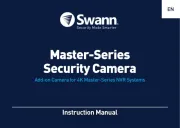
16 Augustus 2025

15 Augustus 2025

15 Augustus 2025

15 Augustus 2025

14 Augustus 2025

14 Augustus 2025

14 Augustus 2025

14 Augustus 2025

14 Augustus 2025

14 Augustus 2025
Handleiding Bewakingscamera
- MEE Audio
- NAPCAT
- Pentax
- Ion
- Feelworld
- IeGeek
- Flir
- Alula
- Videcon
- Y-cam
- Aida
- Braun
- Exibel
- Flamingo
- Tenda
Nieuwste handleidingen voor Bewakingscamera

2 September 2025
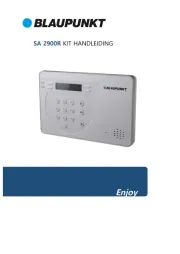
2 September 2025
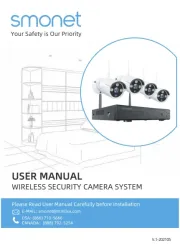
2 September 2025

2 September 2025
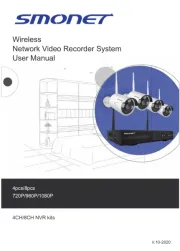
1 September 2025
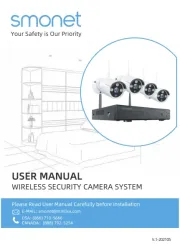
1 September 2025

1 September 2025
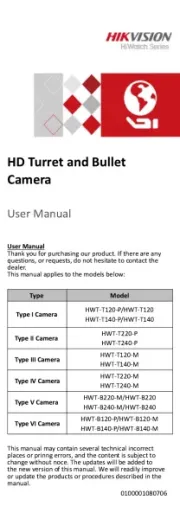
1 September 2025
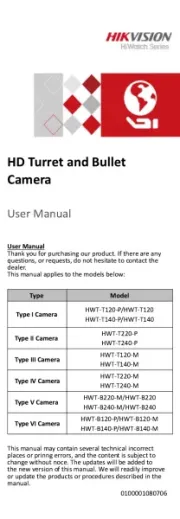
1 September 2025

1 September 2025